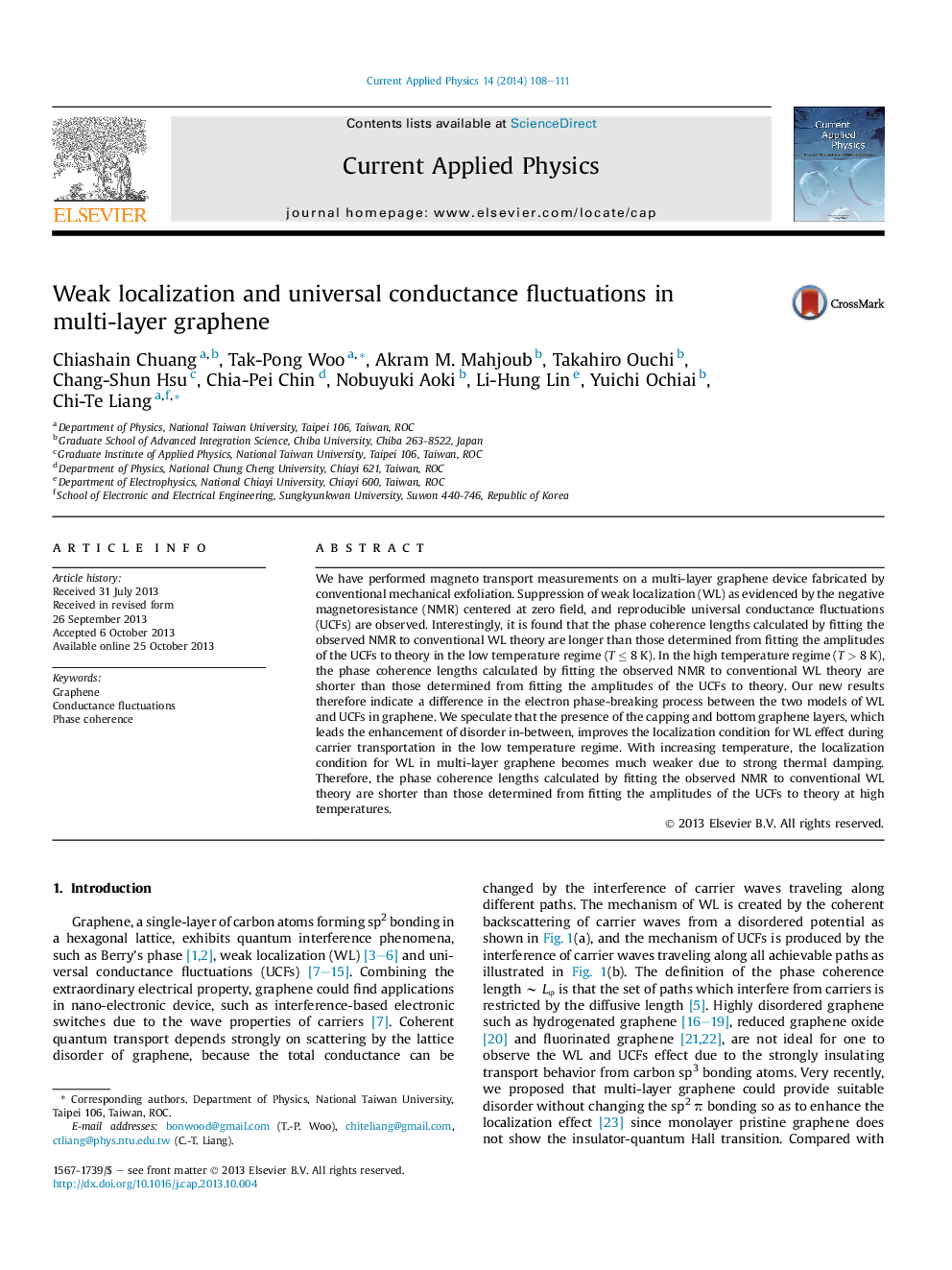| Article ID | Journal | Published Year | Pages | File Type |
|---|---|---|---|---|
| 1786977 | Current Applied Physics | 2014 | 4 Pages |
•Observe weak localization and conductance fluctuations in multi-layer graphene.•The capping and bottom layers may enhance weak localization at low temperatures.•Suggest different coherence mechanism for localization and conductance fluctuations.
We have performed magneto transport measurements on a multi-layer graphene device fabricated by conventional mechanical exfoliation. Suppression of weak localization (WL) as evidenced by the negative magnetoresistance (NMR) centered at zero field, and reproducible universal conductance fluctuations (UCFs) are observed. Interestingly, it is found that the phase coherence lengths calculated by fitting the observed NMR to conventional WL theory are longer than those determined from fitting the amplitudes of the UCFs to theory in the low temperature regime (T ≤ 8 K). In the high temperature regime (T > 8 K), the phase coherence lengths calculated by fitting the observed NMR to conventional WL theory are shorter than those determined from fitting the amplitudes of the UCFs to theory. Our new results therefore indicate a difference in the electron phase-breaking process between the two models of WL and UCFs in graphene. We speculate that the presence of the capping and bottom graphene layers, which leads the enhancement of disorder in-between, improves the localization condition for WL effect during carrier transportation in the low temperature regime. With increasing temperature, the localization condition for WL in multi-layer graphene becomes much weaker due to strong thermal damping. Therefore, the phase coherence lengths calculated by fitting the observed NMR to conventional WL theory are shorter than those determined from fitting the amplitudes of the UCFs to theory at high temperatures.
